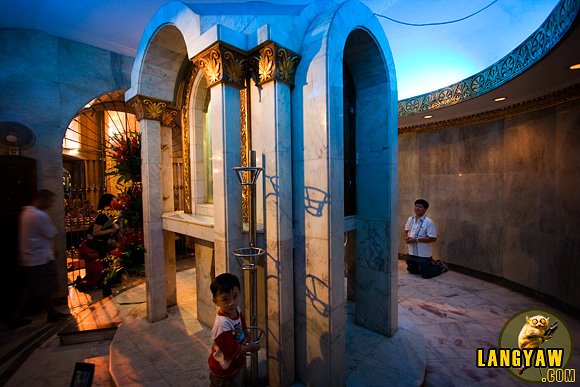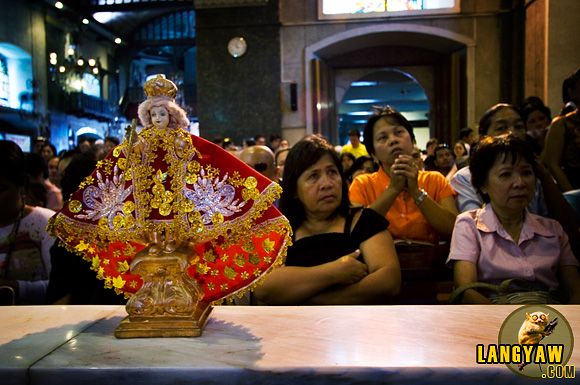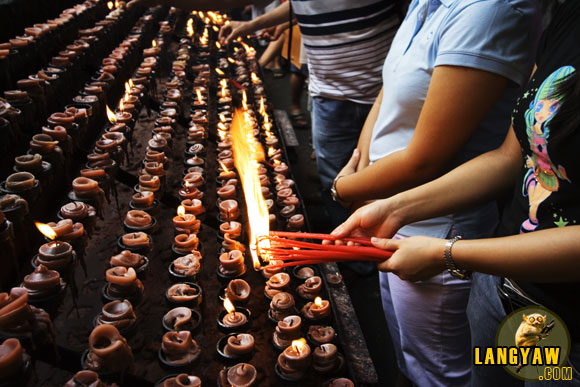
Speak of Cebu and images of the Sto Nino, the province’s patron, come to mind. And so does the valiant Lapu-Lapu, sweet mangoes, the famous lechon, guitars and beaches. But it is more than that. Cebu is a special and beautiful place. It is also my home.

The line of people snaked just behind the smaller entrance of the Basilica Minore del Sto Nino, to the narrow corridors within the Augustinian monastery complex, a counterpart of the famous San Agustin in Intramuros. It continues just before reaching the sacristy and into an even smaller passageway at the back of the chapel where the famous icon of the Sto Nino de Cebu is enshrined.
The devotees silently and patiently await their turn to touch on the glass partition, wiping their handkerchief or kissing the rectangular block directly infront of them. At the same time, they are mumbling prayers and supplications with eyes closed in thanksgiving or for various favors.

The devotion to the Sto Nino de Cebu
Cebu is the center of the Sto Nino de Cebu devotion in the Philippines. In 1521, Ferdinand Magellan arrived in the country, brought the image and gave it as a gift to then named Queen Juana, the wife of Rajah Humabon who were newly baptized into the Catholic faith. 44 years after the death of the circumnavigator, Miguel Lopez de Legazpi returned to the Philippines. During a skirmish in a village that they burned down, they found this same image in one of the still standing huts. It was given to the Augustinians for safekeeping.

The minor basilica (proclaimed as such in 1965) of the Sto Nino de Cebu is the sanctuary of the image under the Augustinians. The first church was started in 1566 made from wood and nipa but got burned. Two structures were built later but it was only in 1735 that the present church was started and finished four years after. The stones used were quarried in Panay and the wood from the forests of Cebu. The architecture is said to be a mixture of Muslim, Romanesque and Neoclassical styles.

Sto Nino de Cebu image
The image of the child Jesus is just about 11 inches in height from feet to crown. It is garbed with a military general’s uniform with one hand holding a globe while the other is raised in blessing and holding a scepter. It is believed to be a 16th century image carved in Flanders. Devotion was officially recognized in 1578 and the feast day was proclaimed in 1641 as every 14 January. Today, it is celebrated every 3rd Sunday of January.

Devotees come in all ages, of different economic status and from different parts of the country and abroad. Families with children or baby in tow line up to kiss at the chapel. Some are bringing gifts like toys, balloons and other items as an offering. Pilgrims gather at an area where they light candles as a means of offering a prayer or supplication. There’s also a nine day novena procession.
Across the country and in many Filipino communities abroad, the 3rd Sunday of January is especially marked with masses, dances and celebration. It is also the highlight of the country’s biggest street festival called the Sinulog.




when i was in cebu, i too became a devotee. it made me appreciate God more in life. attending the vigil the night before the grand parade was the highlight of the celebration. it was one of the most exciting experience one shouldn’t miss when they attend the sinulog.
Great images as usual Estan!
In Flanders ??? Wow… I am from Flanders… do you have more info about that?
I like the banderitas…. i miss the fiestas we have there. It’s fun with all the palaro and the banda and processions… not to mention all the food one can eat.
very nice images indeed.
I can’t imagine Cebu without Sinulog. I’ve been there once in 1992, hiked the entire route and felt blessed by the Holy Infant – when I got back to Davao, I found out that I passed the CGFNS exams for US-bound nurses.
Sidney, that’s all the information I have. They based it on the features of the image and deduced from there.
Nomadic Pinoy, that’s a blessing for you!
Guys, thanx for the visit and comments.
The Filipinos’ devotion to the Sto. Niño is really phenomenal. Antonio Pigafetta’s “First Voyage Around The World” gives an account on how endeared Queen Juana was with the Sto. Niño which was given to her as a gift by Magellan. He mentioned about a miracle that happened in Zugbu when the brother of a Rajah (I can’t exactly recall if it was Humabon) who was then very ill, was healed. Although Pigafetta himself entertained doubts whether what happened was indeed a miracle or pure coincidence, that incident according to him transalated to more Zugbuanos being converted to Christianity. This, and maybe a lot more amazing stories probably explains the Filipinos’ ardent devotion to the child Jesus.
Great narrative, by the way.
“They based it on the features of the image and deduced from there.”
Hahahaha…is he looking lie a Belgian
oh dearest miraclous sto.nino im one of your devotees and your real or true and your doings is real and im here seeking help for me to pass the board examination for teachers and this august its my fourthtime in taking the board exam and i need help from you dearest sto.nino and i wish that all of the priest will pray for me and some of the nun n the church thank you in advance
dong how about the masbate pls send me more pic of masbate city and other barangay